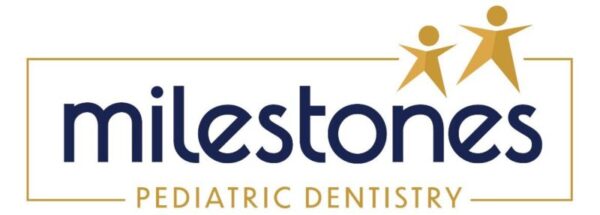Orthodontics FAQs
What age should my child have an orthodontic evaluation?
The American Association of Orthodontists (AAO) recommends an orthodontic screening for children by the age of 7 years. At age 7 the teeth and jaws are developed enough so that the dentist or orthodontist can see if there will be any serious bite problems in the future. Most of the time treatment is not necessary at age 7, but it gives the parents and dentist time to watch the development of the patient and decide on the best mode of treatment. When you have time on your side, you can plan ahead and prevent the formation of serious problems.
Why is it important to have orthodontic treatment at a young age?
Research has shown that serious orthodontic problems can be more easily corrected when the patient’s skeleton is still growing and flexible. We can prepare the mouth for the eventual eruption of the permanent teeth by correcting the skeletal problems at a younger age. If the permanent teeth have adequate space to erupt they will come in fairly straight. If the teeth erupt fairly straight, their tendency to get crooked again after the braces come off is diminished significantly. After the permanent teeth have erupted – usually from age 12-14 – complete braces are placed for final alignment and detailing of the bite. Thus, the final stage of treatment is quicker and easier on the patient. The last phase of treatment usually lasts from 12 – 18 months and is not started until all of the permanent teeth are erupted.
Doing orthodontic treatments in two steps provides excellent results, often allowing the doctor to avoid removal of permanent teeth and jaw surgery.
- Phase-1 treatment is conducted when some of the baby teeth are still present is called.
- Phase-2 treatment occurs after all of the permanent teeth have erupted.
What causes crooked teeth?
Crowded teeth, thumb sucking, tongue thrusting, premature loss of baby teeth, and a poor breathing airway can all contribute to poor tooth positioning. Hereditary factors such as extra teeth, large teeth, missing teeth, wide spacing and small jaws – all can be causes of crowded teeth.
How do teeth move?
Tooth movement is a natural response to light pressure over a period of time. Pressure is applied by using a variety of orthodontic appliances. The most common orthodontic hardwear are braces or brackets attached to the teeth and connected by an arch wire. Periodically changing these arch wires puts pressure on the teeth. At different stages of treatment your child may wear headgear, elastics, a positioner or a retainer. Most orthodontic appointments are scheduled 4 to 6 weeks apart to give the teeth time to move.
Will it hurt?
Discomfort may result when teeth are first moved. This usually lasts about 24 to 72 hours. Patients report a lessening of pain as the treatment progresses. Pain medicines such as acetaminophen (Tylenol) or ibuprofen (Advil) usually help relieve the pain.
Orthodontic Care
Braces Care
You will be shown the proper care of your braces when your orthodontic treatment begins. It’s important to clean your mouth every time you eat. Teeth with braces are harder to clean, and trap food very easily. If food is left lodged in the brackets and wires, it can cause unsightly etching of the enamel on your teeth. Your most important job is to keep your mouth clean. If food is allowed to collect, the symptoms of gum disease will begin to appear. The gums will swell and bleed and the pressure from the disease will slow down tooth movement.
BRUSHING: You should brush your teeth 2-3 times per day.
- Brush back and forth across……between the wires and gums on the upper and lower to loosen any food particles.
- Next, brush correctly as if you had no brackets or appliances on.
- Start on the outside of the uppers with the bristles at a 45 degree angle toward the gum and scrub with a circular motion two or three teeth at a time using ten strokes, then move on.
- Next, do the same on the inner surface of the upper teeth.
- Then, go to the lower teeth and repeat steps 2, 3 and 4.
Look in a mirror to see if you have missed any places. Your teeth, brackets and wires should be free of any food particles and plaque.
Note: If your gums bleed when brushing, do not avoid brushing, but rather continue stimulating the area with the bristles. Be sure to angle your toothbrush so that the area under your gum line is cleaned. After 3 or 4 days of proper brushing, the bleeding should stop and your gums should be healthy again.
FLOSSING: Use a special floss threader to floss with your braces on. Be sure to floss at least once per day.
Fluoride rinse or gel may be recommended for preventive measures.
Appliance Care
Clean the retainer by brushing with toothpaste. If you are wearing a lower fixed retainer be extra careful to brush the wire and the inside of the lower teeth. Always bring your retainer to each appointment. Avoid flipping the retainer with your tongue because it can damage your teeth. Place the retainer in the plastic case when removing it from your mouth. Never wrap the retainer in a paper napkin or tissue because someone may throw it away. Don’t put it in your pocket or you may break or lose it. Excessive heat will warp and ruin the retainer, so don’t leave it in your car during the hot summer months.
Elastics Care
If elastics – called rubber bands – are worn intermittently, they will continually cause more soreness. Sore teeth between appointments usually indicates improper wear of headgear or elastics, or signals inadequate hygiene. Wear your elastics exactly as your orthodontist instructs you. Take your elastics off while brushing. Change elastics as directed, usually once or twice a day.

